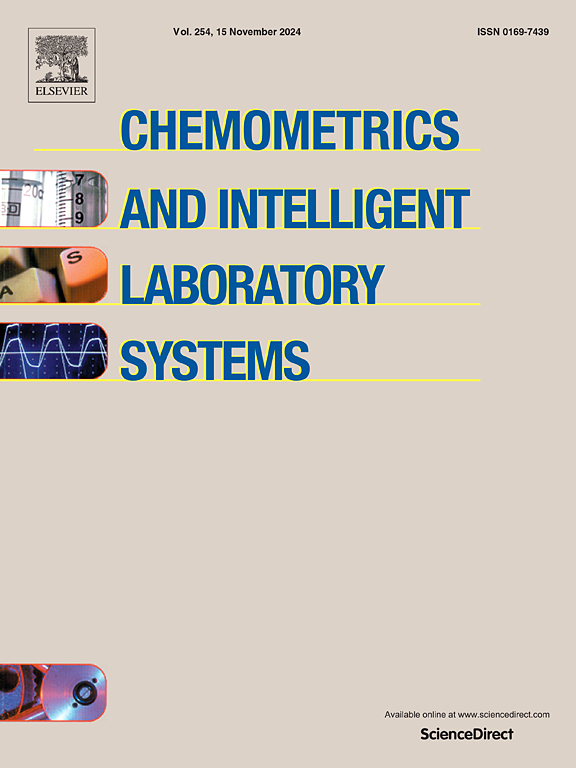Classification of maize leaf diseases with deep learning: Performance evaluation of the proposed model and use of explicable artificial intelligence
IF 3.8
2区 化学
Q2 AUTOMATION & CONTROL SYSTEMS
Chemometrics and Intelligent Laboratory Systems
Pub Date : 2025-04-23
DOI:10.1016/j.chemolab.2025.105412
引用次数: 0
Abstract
Maize leaf diseases pose significant threats to global agricultural productivity, yet traditional diagnostic methods are slow, subjective, and resource-intensive. This study proposes a lightweight and interpretable convolutional neural network (CNN) model for accurate and efficient classification of maize leaf diseases. Using the ‘Corn or Maize Leaf Disease Dataset’, the model classifies four disease categories Healthy, Gray Leaf Spot, Common Rust, and Northern Leaf Blight with 94.97 % accuracy and a micro-average AUC of 0.99. With only 1.22 million parameters, the model supports real-time inference on mobile devices, making it ideal for field applications. Data augmentation and transfer learning techniques were applied to ensure robust generalization. To enhance transparency and user trust, Explainable Artificial Intelligence (XAI) methods, including LIME and SHAP, were employed to identify disease-relevant features such as lesions and pustules, with SHAP achieving an IoU of 0.82. The proposed model outperformed benchmark models like ResNet50, MobileNetV2, and EfficientNetB0 in both accuracy and computational efficiency. Robustness tests under simulated environmental challenges confirmed its adaptability, with only a 2.82 % performance drop under extreme conditions. Comparative analyses validated its statistical significance and practical superiority. This model represents a reliable, fast, and explainable solution for precision agriculture, especially in resource-constrained environments. Future enhancements will include multi-angle imaging, multimodal inputs, and extended datasets to improve adaptability and scalability in real-world conditions.
玉米叶片病害的深度学习分类:提出的模型的性能评估和可解释的人工智能的使用
玉米叶片病害对全球农业生产力构成重大威胁,但传统的诊断方法缓慢、主观且资源密集。本研究提出了一种轻量级、可解释的卷积神经网络(CNN)模型,用于玉米叶片病害的准确、高效分类。利用“玉米或玉米叶病数据集”,该模型对健康、灰斑病、普通锈病和北方叶枯病四种疾病进行分类,准确率为94.97%,微平均AUC为0.99。该模型只有122万个参数,支持移动设备上的实时推理,是现场应用的理想选择。应用数据增强和迁移学习技术确保鲁棒泛化。为了提高透明度和用户信任度,我们采用了可解释人工智能(Explainable Artificial Intelligence, XAI)方法,包括LIME和SHAP来识别病变和脓疱等疾病相关特征,SHAP的IoU为0.82。该模型在精度和计算效率方面都优于ResNet50、MobileNetV2和EfficientNetB0等基准模型。在模拟环境挑战下的鲁棒性测试证实了其适应性,在极端条件下性能仅下降2.82%。对比分析验证了其统计学意义和实用优越性。该模型为精准农业提供了可靠、快速和可解释的解决方案,特别是在资源受限的环境中。未来的增强将包括多角度成像、多模态输入和扩展数据集,以提高现实条件下的适应性和可扩展性。
本文章由计算机程序翻译,如有差异,请以英文原文为准。
求助全文
约1分钟内获得全文
求助全文
来源期刊
CiteScore
7.50
自引率
7.70%
发文量
169
审稿时长
3.4 months
期刊介绍:
Chemometrics and Intelligent Laboratory Systems publishes original research papers, short communications, reviews, tutorials and Original Software Publications reporting on development of novel statistical, mathematical, or computer techniques in Chemistry and related disciplines.
Chemometrics is the chemical discipline that uses mathematical and statistical methods to design or select optimal procedures and experiments, and to provide maximum chemical information by analysing chemical data.
The journal deals with the following topics:
1) Development of new statistical, mathematical and chemometrical methods for Chemistry and related fields (Environmental Chemistry, Biochemistry, Toxicology, System Biology, -Omics, etc.)
2) Novel applications of chemometrics to all branches of Chemistry and related fields (typical domains of interest are: process data analysis, experimental design, data mining, signal processing, supervised modelling, decision making, robust statistics, mixture analysis, multivariate calibration etc.) Routine applications of established chemometrical techniques will not be considered.
3) Development of new software that provides novel tools or truly advances the use of chemometrical methods.
4) Well characterized data sets to test performance for the new methods and software.
The journal complies with International Committee of Medical Journal Editors'' Uniform requirements for manuscripts.

 求助内容:
求助内容: 应助结果提醒方式:
应助结果提醒方式:


